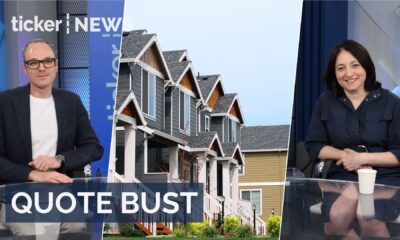New Pulse report reveals powerful growth and rental returns in overlooked markets.
Amidst a backdrop of modest national property growth, a number of affordable suburbs have defied the trend, delivering investors robust returns and healthy rental yields over the past 12 months, according to the latest Pulse report by Washington Brown and Hotspotting.
From Townsville to Bunbury, the data reveals a suite of property markets where investors made substantial capital gains while still enjoying significant yields – proving that the so-called trade-off between yield and growth is anything but a rule.
“We’ve long been told you can’t have your cake and eat it too in property – growth or yield, not both. But that’s simply not true,”
— Tyron Hyde, Director, Washington Brown
“The locations identified in The Pulse consistently deliver on both fronts, giving savvy investors a genuine opportunity to build wealth.”
The Pulse revealed that the average growth across its top 50 selected locations from last year was 18%, at a time when the national average was just two to three per cent.
“That equates to an average investor gain of $93,000, compared to less than $25,000 nationally,” Mr Hyde said.
“These aren’t random lottery wins – they’re the result of data-led investing. And with the right advice, everyday investors can still access markets where price and yield work hand-in-hand.”
“Nowhere was this more evident than in Aitkenvale in Townsville, where house prices rocketed 40% – translating to a capital gain of $170,000 on a median-priced property over the past year.”
Top 10 investment suburbs from May 2024 to May 2025
-
Aitkenvale, Townsville, QLD: Gain $170,000 (40%)
-
Midland, Swan, WA: Gain $167,000 (35%)
-
Park Avenue, Rockhampton, QLD: Gain $140,000 (33%)
-
Kin Kora, Gladstone, QLD: Gain $150,000 (30%)
-
Carey Park, Bunbury, WA: Gain $130,000 (30%)
-
Berserker, Rockhampton, QLD: Gain $126,000 (28%)
-
Balga, Stirling, WA: Gain $155,000 (27%)
-
Withers, Bunbury, WA: Gain $125,000 (27%)
-
Kirwan, Townsville, QLD: Gain $136,000 (26%)
-
Salisbury North, Salisbury, SA: Gain $140,000 (26%)
“These aren’t million-dollar suburbs, either,” Mr Hyde said.
“In places like Carey Park in WA, where the median house price was just $370,000, investors gained $130,000 in a year while accessing potential annual tax depreciation benefits of more than $5,000. That’s the power of smart property investing.”
Hotspotting Director Terry Ryder said rental yields have also remained strong across these regions, with many suburbs delivering gross yields above 6% while rents surged in tandem with price growth.
“We’re seeing sustainable double-plays – value appreciation plus rental performance,” Mr Ryder said.
“What stands out in our house market analysis is the sheer consistency of growth in regional and affordable areas because these are not one-off boom towns.
“They’re markets with real economic drivers, infrastructure investment, and increasing buyer demand.”
Mr Ryder added that many of the top-performing house markets were not even on the radar of mainstream property coverage, yet they’ve outpaced capital city averages by a wide margin.
“In places like Kin Kora, Withers, and Berserker, we’re seeing gains of 25% to 30% in one year, at a time when national growth is hovering around three per cent. It sends a strong signal that investors should be looking beyond the usual suspects,” he said.
Depreciation benefits added another layer of value for investors, particularly those purchasing newer or well-maintained properties, Mr Hyde said.
“While the scale of these benefits varies based on property type and location, the potential for annual tax savings remains a contributing factor to overall returns.”
“Depreciation isn’t a silver bullet, but it makes a meaningful difference – especially in lower-priced markets where yields are already strong.
“In locations like Aitkenvale or Carey Park, for example, the additional tax offsets can help improve cash flow and make an already solid investment even more attractive.”
How Pulse suburbs are selected
Locations included in The Pulse are chosen using multiple layers of key criteria, known as EMPIRICAL evidence:
-
Economy – Must be strong & diverse
-
Market size – Minimum of 50 house sales in the past 12 months
-
Population – Local government area ideally above 15,000
-
Infrastructure – Good existing amenities & major new projects
-
Rental market – Low vacancies and rising rents
-
Employment – Evidence of local job growth
-
Capital growth – Strong potential over five years
-
Affordability – Median house prices below $665,000
-
Low risk – Avoiding volatile, high-risk markets
Bricks & Mortar Media | media@bricksandmortarmedia.com.au





 News17 hours ago
News17 hours ago


 Ticker Views15 hours ago
Ticker Views15 hours ago


 Shows4 days ago
Shows4 days ago


 News18 hours ago
News18 hours ago


 News18 hours ago
News18 hours ago


 News4 days ago
News4 days ago


 News5 days ago
News5 days ago


 News5 days ago
News5 days ago







